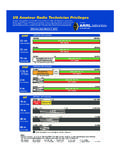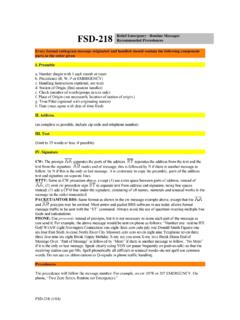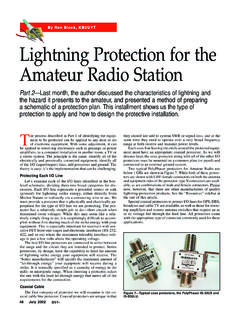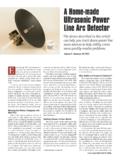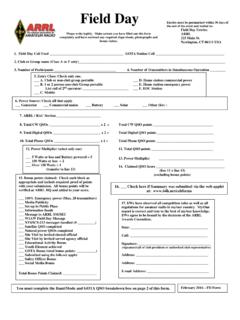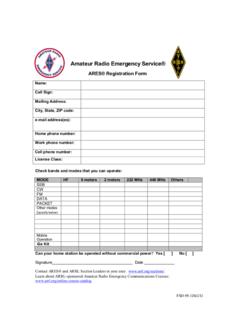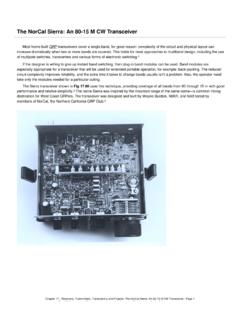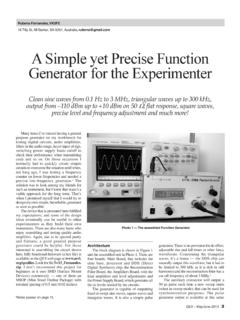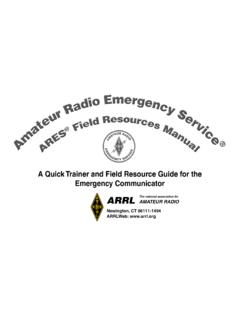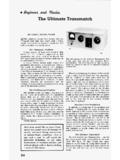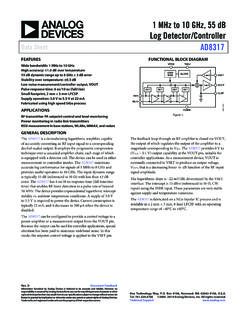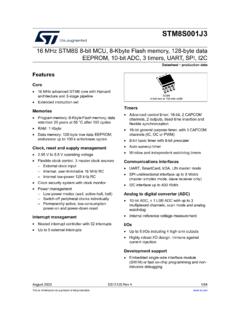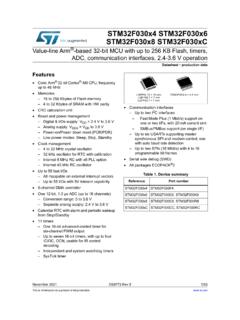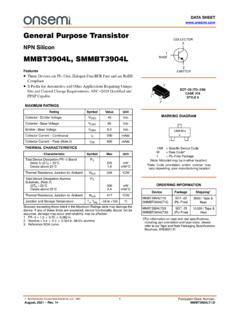Transcription of US Amateur Radio Bands - ARRL
1 23 cm (1240 MHz)*1240127012951300N (5 W )E,A,G,TMHz33 cm (902 MHz)* ,A,G,T70 cm (420 MHz)* ,A,G, Meters (222 MHz) ,A,G,TMHzN (25 W )2 Meters (144 MHz) ,A,G,TMHz6 Meters (50 MHz) ,A,G,TMHz10 Meters (28 MHz) MHzE,A,GN,T(200 W )12 Meters (24 MHz) MHzE,A,GN,T(200 W )15 Meters (21 MHz) Meters (18 MHz)E,A,G20 Meters (14 MHz) Watts PEP30 Meters ( MHz) MHzE,A,GAvoid interference to fixed services outside the Sections (c), (f)(11) and (e).These exemptions do not apply to stations in the continental ,T(200 W ) ,T outside region 1,3 and FCC region 2 west of 130 west or below 20 north40 Meters (7 MHz) , Advanced, and Amateur Extra licensees may operate on these five channels on a secondary basis with a maximum effective radiated power (ERP) of 100 W PEP relative to a half-wave dipole.
2 Permitted operat-ing modes include upper sideband voice (USB), CW, RTTY, PSK31 and other digital modes such as PACTOR III. Only one signal at a time is permitted on any Meters ( MHz) ,A,G(100 W )CW,DigUSB80 Meters ( MHz) ,T(200 W ) Meters ( MHz) ,A,GMHzAvoid interference to radiolocation operations from to kHz479 kHzE,A,G630 Meters (472 kHz)5 W EIRP maximum, except in Alaska within 496 miles of Russia where the power limit is 1 W ,A,G2,200 Meters (135 kHz) kHz1 W EIRP maximumSee ARRLWeb at for detailed band = Amateur ExtraA = AdvancedG = GeneralT = TechnicianN = Novice= RTTY and data= phone and image= SSB phone= CW only= USB phone, CW, RTTY, and data= Fixed digital message forwarding systems onlyKEYNote.
3 CW operation is permitted throughout all Amateur is authorized above MHz, except for and 219-220 transmissions are authorized above 51 MHz, except for 219-220 MHzARRL Headquarters: 860-594-0200 (Fax 860-594-0259) email: Orders: Toll-Free 1-888-277-5289 (860-594-0355) email: Desk: Toll-Free 1-888-277-5289 (860-594-0338) email: Started in Amateur Radio : Toll-Free 1-800-326-3942 (860-594-0355) email: 860-594-0300 email: Amateur Radio BandsUS Amateur POWER LIMITSFCC An Amateur station must use the minimum transmitter power necessary to carry out the desired communications. (b) No station may transmit with a transmitter power exceeding kW PEP.
4 *Geographical and power restrictions may apply to all Bands above 420 MHz. See The arrl Operating Manual for information about your licensees except Novices are authorized all modes on the following frequencies:2300-2310 MHz2390-2450 MHz3300-3500 MHz5650-5925 GHz GHz134-141 GHz241-250 GHzAll above 275 GHz No pulse emissionsCopyright arrl 2017 rev. 9/22/2017 Amateurs wishing to operate on either 2,200 or 630 meters must first register with the Utilities Technology Council online need only register once for each band.
